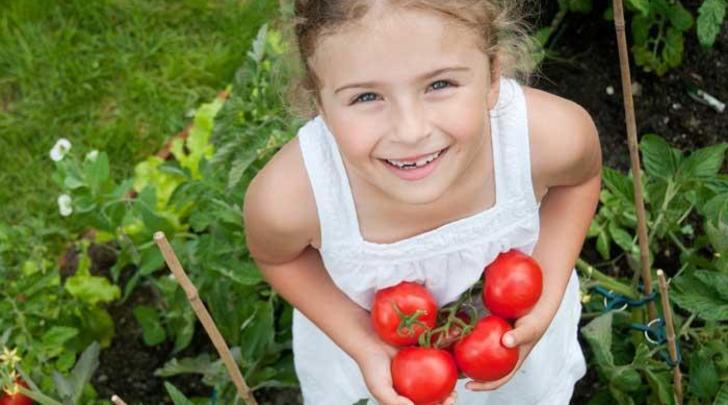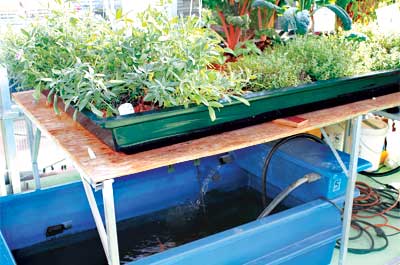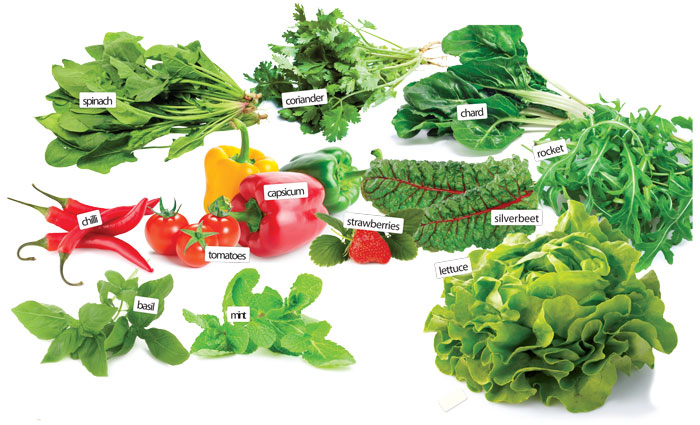Gardening by season
Getting the best from your late-season harvest
Janet Luke

This is one of the hottest times of the year in the garden, but as long as it gets enough water your garden will produce some wonderful crops. This is harvest time, when all your hard work comes to fruition. I love nothing better than walking around the garden tasting and munching on all the ripening bounty.
Insect pests will be at an all-time high at the moment and can quickly cause damage to the fruit and leaves of plants. Keep a close eye out for them.
Look under leaves and at the growing tips of plants as this is often where they will hang out. If you see white cabbage butterflies over your vegetable beds it’s certain that you will have their green caterpillar babies munching on your crops – brassicas being their favourite – and regular application of organic sprays are important (see our story Safer garden sprays for a guide to natural insect control products).
Harvesting
Harvest crops regularly. If you haven’t already, you can pull up your garlic and onion plants. They are ready to harvest when at least half of the green growth has turned brown. I lay mine on the garden beds so they are exposed to the sun for a few days. This helps to dry them so that they keep longer. You can even get artistic and plait them like the French do.
Harvest these crops now
- pumpkins
- tomatoes
- potatoes
- kumara
- carrots
- capsicums
- chillies
- eggplants
Planting
It seems a little strange to be thinking about winter crops during this sunny weather but now is the time to get your winter broccoli, cabbages and cauliflower crops in. Planted seedlings will have a good month of warm weather to get established before growth starts to slow as the colder weather begins. Keep a close eye on any new seedlings as they can disappear before your eyes due to slugs, snails, caterpillars or birds.
Plant these seedlings/seeds now
- carrots
- broccoli
- cabbage
- cauliflower
- kale
- parsnip
- spinach
- leeks
- spring onion
- beetroot
- winter cos lettuce
Aquaponics explained

Have you grown lettuce this summer only to find that it tastes very bitter when harvested? This is a common problem over the hot dry months. All salad greens require a constant water source during their growth or they will become very bitter and bolt to seed.
Summer is always a high demand time for salad greens, so how can you avoid this problem?
I have been growing all my summer salad greens using a simple aquaponics system which I have found foolproof, low maintenance and very productive in a small space. I reckon that ticks all the boxes! Why not give it a go yourself, particularly if you have an outside pond or goldfish tank.
Aquaponics is a food production system where fish are used to grow food. The fish excrete waste into their tank or pond water and this is pumped into a soilless planter bed, where you have your plants growing. Bacteria in the planter bed convert ammonia in the fish water into nitrates and then nitrogen which the plants use for growth. The water is then returned to the fish cleaned and oxygenated. The system is totally closed needing no inputs other than food for your fish. The system suits a small space gardener as it can be easily scaled up or down depending on the space you have available.
Overseas, edible freshwater fish species such as tilapia, trout, catfish and perch are used. In New Zealand our choice is limited as it is illegal to farm trout and tilapia are not available. Goldfish, though not edible, are the most common option. A side-line hobby of raising baby goldfish for pet shops could be an option?
The growing beds for the plants are soilless as any soil would be flushed into the tank water, contaminating it for the fish. The most common growing material which is used in this type of system is called hydroton. Hydroton provides a substrate for the plants’ roots to attach to. Another material that you could use is small particles of pumice or vermiculite. The plant roots are bathed in the moving water so that they can take up the nitrogen from the water.
A small pond pump is used to pump the water from the fish tank up into the grow bed and then this water is drained back in to the fish tank by gravity. The pump does not have to operate continuously; it can be on a set timer to come on for 10 minutes every hour; this helps to conserve energy. Alternatively invest in a solar-powered pump. All the vegetables have to be grown spray free as any chemical applied to the plants has the potential to be washed into the fish tank, killing the fish. If you do find any caterpillars or aphids on your vegetables they can be picked off by hand and fed to the fish as a treat.
It can take a few weeks for the bacteria to build up to therapeutic levels in a new system. It is a good idea to use some water to fill your new fish tank from an established pond or fish tank. If you are starting out with small fish it is safe to overstock so that they produce enough waste for the plants’ needs. Once established you should find that your fish tank is self-cleaning without the need to drain and replace water or add any chemicals.
What I love most about this system is with an automatic timer you can go away over the height of summer and know that your aquaponic plants are being watered and fed automatically.
Plants that grow well in an aquaponic system

Learn more about aquaponics
Janet Luke’s latest book, Embrace Your Space, has more information and step-by-step instructions on how to build and maintain your own aquaponics system, along with lots of other small-space gardening ideas. See page 30 for a chance to win one of two copies, or visit www.greenurbanliving.co.nz to purchase.
